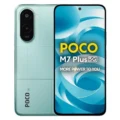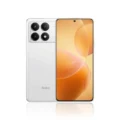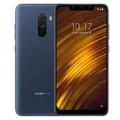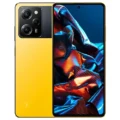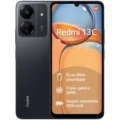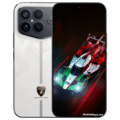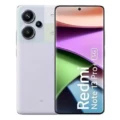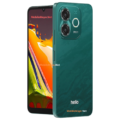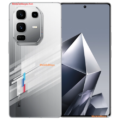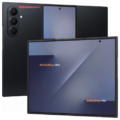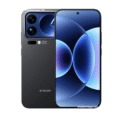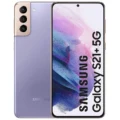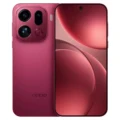Price List: Under Tk.5,000 | Tk.5001-10000 | Tk.10001-15000 | Tk.15001-20000 | Tk.20001-30000 | Tk.30001-40000 | More Mobiles
- Home
- All Mobile
- Xiaomi
- Xiaomi Poco Pad M1
Xiaomi Poco Pad M1
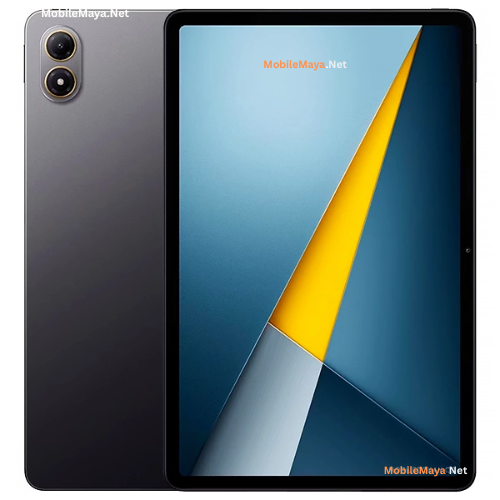

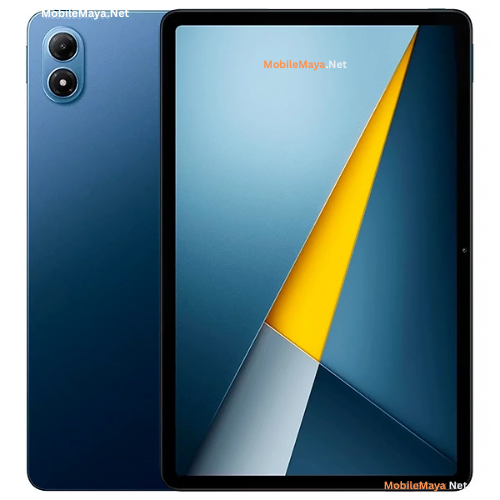
Specifications
Price in Bangladesh
| Expected Price | Coming soon |
General
| Device Type | Tablets |
| Announced | November, 2025 |
| Released | December, 2025 |
| Status | Available |
Hardware & Software
| Operating System OS => Every computer system run on a base software called Operating System (OS). Operating System controls all basic operations of the computer (such as smartphone, PDAs, tablet computers and other handheld devices). The Operating System allows the user to install and run third party applications (apps), apps are used to add new functionality to the device. | Android |
| OS Version | v15 |
| User Interface UI or user interface of a device is the look and feel of the on-screen menu system. How it works, its color scheme, how it responds to button presses, all of these things are part of the user interface. | HyperOS 2 |
| Chipset Chipset is a group of integrated circuits designed to perform one or a more dedicated functions, often with real time computing constraints, Popular smartphones are equipped with more advanced embedded chipsets that can do many different tasks depending on their programming. | Qualcomm SM7635-AC Snapdragon 7s Gen 4 (4 nm) |
| CPU CPU (Central Processing Unit) mostly known as processors, CPU processes instructions in order to carry out certain functions that make your device operate properly. Processors are often described as the brain of computers, smartphones and tablets, Smartphones and tablets rely on processors to carry out their every task, Processors are an incredibly important factor in selecting any type of computing device, including your smartphone. | Octa-core (1x2.7 GHz Cortex-A720 & 3x2.4 GHz Cortex-A720 & 4x1.8 GHz Cortex-A520) |
| GPU GPU (Graphics Processing Unit) is a single-chip processor designed to rapidly manipulate and alter memory to accelerate the creation of images in a frame buffer intended for output to a display, This includes things such as lighting effects, object transformations, and 3D motion. | Adreno 810 |
| RAM (Memory) RAM (Random Access Memory) is a type of computer memory that can be accessed randomly, any byte of memory can be accessed without touching the preceding bytes that allows information to be stored and accessed quickly from random locations. RAM is the most common type of memory found in computer systems, smartphones, tablets and other electronic devices. | 8 GB |
Design
| Dimensions | 279.8 x 181.7 x 7.5 mm (11.02 x 7.15 x 0.30 in) |
| Weight | 610 g (1.34 lb) |
| Colors |
Gray, Blue |
| Build Material | Glass front, aluminum frame, aluminum back |
Display
| Display Type Display Technology => A number of display technologies and types used in mobile phones => TFT (Thin Film Transistor), IPS (In-Place Switching), OLED (Organic Light Emitting Diode), AMOLED (Active-Matrix Organic Light-Emitting Diode), Super AMOLED (an even advanced version of AMOLED), Resistive Touchscreen (Resistive touchscreens contain two layer of conductive material with a very small gap between them which acts as a resistance), Capacitive Touchsceen (Capacitive touchscreen technology consists of a layer of glass coated with a transparent conductor) | IPS LCD |
| Size | 12.1 inches, 424.5 cm2 (~83.5% screen-to-body ratio) |
| Resolution | 1600 x 2560 pixels, 16:10 ratio (~249 ppi density) |
| Display Colors Display Colors is refers to the number of different shades of colors that the screen is capable of displaying => 64K colors, 256K colors and 16 million colors, Obviously 16M is highest available range of colors and better than others. | 1B colors |
| Brightness | 600 nits (HBM) |
| Refresh Rate | 120Hz |
| HDR 10 / HDR+ support |
Rear Camera
| Camera Setup | Single |
| Main Camera | 8 MP, f/2.0, (wide), 1/4.0", 1.12µm |
| OIS | |
| Flash Flash Light => There is commonly two types of flash lights are used in camera mobile phones, LED Flash (LED flash offers lower power consumption with drive circuitry that takes up very little room, LEDs can be strobed faster than any other light source), Xenon Flash (xenon flash produces an extremely intense full-spectrum white light for a very short duration) | LED flash |
| Video | 1080p@30fps |
Front Camera
| Camera Setup | Single |
| Secondary |
8 MP, f/2.3, (wide), 1/4.0", 1.12µm |
| Video | 1080p@30fps |
Battery
| Battery Type Battery Type => Cell phones run on various kinds of batteries depending on the manufacturer, phone size or shape and features. There are basically four types of cell phone batteries => Lithium Polymer, Lithium Ion, Nickel Metal Hydride and Nickel Cadmium. | Li-Ion (Lithium Ion) |
| Placement | Non-removable |
| Capacity Battery Capacity is a measure (typically in Amp-hr) of the charge stored by the battery, and is determined by the mass of active material contained in the battery. The battery capacity represents the maximum amount of energy that can be extracted from the battery under certain conditions. | 12000 mAh |
| Quick Charging | 33W wired, PD3.0, QC3+ |
| USB Type-C | USB Type-C 2.0 |
Storage
| Storage Capacity | 256 GB |
| USB OTG |
Network
| 2G Network |
N/A |
| 3G Network |
N/A |
| 4G Network |
N/A |
| 5G Network |
|
| SIM SIM (Subscriber Identity Module) is a small card that contains mobile network subscriber's account information. This allows the phone using the card to attach to a mobile network. The SIM card is most commonly associated with GSM and UMTS mobile networks. Moving a SIM card from one phone to another allows a subscriber to switch mobile phones without having to contact their mobile network carrier. SIM cards can also be used by a phone to store limited amounts of data, such as phone numbers and text messages. | Standard SIM |
Data
| GPRS GPRS (General Packet Radio Service) is a packet oriented mobile data service on the 2G and 3G cellular communication system's global system for mobile communications (GSM), Generally, GPRS is used for the purpose of wireless data transfer, such as sharing pictures and videos or browsing the Internet via a mobile phone connection. | |
| EDGE EDGE (Enhanced Data GSM Environment) is a wireless network technology generally considered the next step in the 2G network offers data transfer rates up to four times faster than ordinary GSM networks, Generally, EDGE is used for the purpose of wireless data transfer, such as sharing pictures and videos or browsing the Internet via a mobile phone connection. | |
| Speed | No |
| Web Browser Web Browser => a web browser is a software application used to locate, retrieve and display content on the World Wide Web, including Web pages, images, video and other files, The primary function of a web browser is to render HTML, the code used to design or markup webpages. | HTML5 |
Messaging
| SMS SMS (Short Messaging Service) is a text messaging service component of phone, Web, or mobile communication systems. It uses standardized communications protocols to allow mobile phone devices to exchange short text messages over the networks. | Yes |
| MMS MMS (Multimedia Messaging Service) is a standard way to send messages that include multimedia content (audio clips, video clips and images) to and from mobile phones over wireless networks using the WAP protocol. | |
| Email Email (Electronic Mail) is a system for receiving, sending, and storing electronic messages, Similar to a letter, email is text messages that may contain files, images, or other attachments sent via the internet to a recipient by using applications and software prograps. An email address is required to receive email, and that address is unique to the user. | Yes |
| IM IM (Instant Messaging) is an exchange of text messages through a software application, it enable you to create a kind of private chat room with another individual in order to communicate in real time over the Internet. | Yes |
Connectivity
| Bluetooth Bluetooth is a wireless communications technology for exchanging data between mobile phones, headsets, computers and other network devices over short distances without wires, Bluetooth technology was primarily designed to support simple wireless networking of personal consumer devices. | 5.4, A2DP, LE, aptX HD, aptX Adaptive |
| Wi-fi Wi-Fi is a popular wireless networking technology using radio waves to provide high-speed network connections that allows devices to communicate without cords or cables, Wi-Fi is increasingly becoming the preferred mode of internet connectivity all over the world. | Wi-Fi 802.11 a/b/g/n/a/6, dual-band, Wi-Fi Direct |
| Wi-fi Hotspot | |
| Infrared Infrared connectivity is an old wireless technology used to connect two electronic devices. It uses a beam of infrared light to transmit information and so requires direct line of sight and operates only at close range. | |
| USB | USB Type-C 2.0, OTG |
| GPS GPS The Global Positioning System is a satellite-based radio navigation system, GPS permits users to determine their position, velocity and the time 24 hours a day, in all weather, anywhere in the world, In order to locate your position, your device or GPS receiver must have a clear view of the sky. | No |
| NFC NFC (Near field communication) is a set of standards for smartphones and similar devices to establish peer-to-peer radio communications with each other by touching them together or bringing them into proximity, usually no more than a few inches. |
Media
| FM Radio | No |
| Loudspeaker | Yes, with stereo speakers (4 speakers) |
| 3.5mm Jack | Yes |
Sensors & Security
| Fingerprint Sensor |
More
| Made By | China |
Performance Tests
PROS
- Large 120Hz high-quality display
- Powerful Snapdragon processor
- Long-lasting 12,000mAh battery
- Aluminum premium design
- Stereo speakers with 3.5mm jack
- Smooth HyperOS 2 interface
CONS
- No cellular network support
- No GPS
- Camera setup is basic
- Only one RAM/Storage variant
Xiaomi Poco Pad M1 Price in Bangladesh
The Xiaomi Poco Pad M1 is an upcoming mid-range Android tablet expected to launch in Bangladesh very soon. The device will likely arrive with 8GB RAM and 256GB storage, and the expected price in Bangladesh is Coming Soon (official price yet to be announced).
The Poco Pad M1 stands out for its large 12.1-inch IPS LCD display, 120Hz refresh rate, powerful Snapdragon 7s Gen 4 chipset, and massive 12,000mAh battery — making it an excellent choice for students, casual users, and entertainment lovers. As a mid-range tablet, it offers an impressive mix of performance, battery efficiency, and entertainment features without reaching flagship pricing.
Price & Variants
| RAM & Storage | Price (BDT) | Status |
|---|---|---|
| 8GB + 256GB | Coming Soon | Upcoming |
Xiaomi Poco Pad M1 Specifications
The Xiaomi Poco Pad M1 is an upcoming mid-range Android tablet featuring a sleek aluminum body, a smooth 12.1-inch 120Hz display, Snapdragon 7s Gen 4 processor, and a massive 12000mAh battery — designed for multimedia consumption, productivity, and everyday multitasking.
Full Specifications
| Feature | Details |
|---|---|
| Model Name | Xiaomi Poco Pad M1 |
| Release Date | November 2025 (Expected) |
| Market Availability | Upcoming |
| Official Price | Coming Soon |
| RAM & Storage | 8GB RAM + 256GB Storage |
Display and Design
The Poco Pad M1 features a 12.1-inch IPS LCD display with a crisp 1600×2560 resolution and a smooth 120Hz refresh rate, ensuring fluid scrolling and better animation handling — perfect for gaming, browsing, or media streaming.
Supporting 1B colors and 600 nits HBM brightness, the screen delivers bright, vibrant visuals suitable for indoor and outdoor use.
In terms of design, the tablet sports a premium aluminum frame and back, measuring 7.5mm thick and weighing 610g. It comes in elegant Gray and Blue color options and offers an overall modern, minimalist aesthetic.
Performance and Processor
Powering the device is the Qualcomm Snapdragon 7s Gen 4 (4nm) chipset, paired with an Octa-core CPU (Cortex-A720 & Cortex-A520 mix) and Adreno 810 GPU.
This hardware combination ensures smooth performance for multitasking, media consumption, and gaming at medium to high settings. The 8GB RAM helps maintain stable app switching, and the 256GB internal storage provides ample space for movies, apps, and documents.
Storage expansion is not officially mentioned, but USB OTG support ensures external drive connectivity.
Camera and Video
The Poco Pad M1 includes a simple yet functional camera setup designed for video calls, scanning documents, and casual photography.
Rear Camera
- 8MP wide lens, f/2.0
- LED flash
- 1080p video at 30fps
Front Camera
- 8MP front-facing camera
- 1080p video
Both cameras support clear video recording, making this tablet suitable for online classes, meetings, and general communication.
Battery and Charging
A major highlight of this device is its massive 12,000mAh battery, ideal for binge-watching, long study sessions, or travel.
Charging is supported via 33W wired fast charging (PD3.0 & QC3+), ensuring quick top-ups despite the large battery capacity. The tablet’s efficiency is further enhanced by the 4nm Snapdragon chip and optimized software.
Connectivity and 5G Support
The Poco Pad M1 is a Wi-Fi only tablet with no SIM support, meaning no cellular connectivity (2G/3G/4G/5G not supported).
Connectivity features include:
- Bluetooth 5.4 with aptX Adaptive
- Dual-band Wi-Fi (a/b/g/n/ac/6)
- USB Type-C 2.0 with OTG
- Infrared blaster
- No GPS
- No NFC
Additional Features
- Stereo speakers with four speaker setup
- 3.5mm headphone jack
- Android 15 with HyperOS 2
- Standard tablet sensors
- Aluminum body for durability
- USB Type-C port
Reason to Buy
- Large 12.1-inch 120Hz display for immersive entertainment
- Long-lasting 12,000mAh battery
- Smooth performance with Snapdragon 7s Gen 4 chipset
- Modern design with aluminum build
- Great for students, online classes, and media consumption
- Stereo speakers enhance movie and gaming experience
- Android 15 + HyperOS 2 ensures better optimization
Verdict
The Xiaomi Poco Pad M1 is shaping up to be an excellent mid-range tablet focused on multimedia and productivity. Its large high-refresh-rate display, powerful battery, and efficient processor make it ideal for students, binge-watchers, and casual users seeking strong value without spending a premium.
If you’re looking for an affordable, high-performance Android tablet for everyday use, the Poco Pad M1 is definitely worth waiting for.
FAQ
1. Does the Xiaomi Poco Pad M1 support SIM or mobile data?
No, this is a Wi-Fi-only tablet without SIM support.
2. What is the expected price of Poco Pad M1 in Bangladesh?
The price is not announced yet—it will be listed as soon as Xiaomi confirms.
3. Does the Poco Pad M1 support fast charging?
Yes, it supports 33W fast charging.
4. Can I play games like PUBG or Genshin Impact?
Yes, the Snapdragon 7s Gen 4 provides good mid-range gaming performance.
5. Is the storage expandable?
No dedicated card slot is mentioned, but USB OTG allows external drive support.
Alternatives to Xiaomi Poco Pad M1
Here are some latest alternatives you can consider:
- Samsung Galaxy Tab A9+ (2024)
- Realme Pad 2 (2024)
- Lenovo Tab P12 (2024)
- Xiaomi Pad 6 (2024)
User Reviews
Disclaimer Note
We do not guarantee that the information of this page is 100% accurate and up to date.


